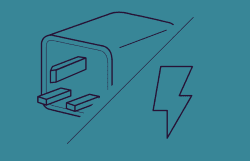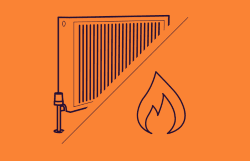The combination of circuit or fuses, electrical disconnects switches or breakers used to isolate, protect and control electrical equipment or gears from the defective condition are usually called switchgear.
Listed below are some examples of switchgear:
- Fuses,
- Switches
- Relays
- Isolator
- Circuit Breaker
- Potential and Current Transformer
- Indicating Device
- Lightning Arresters
Let us discuss what switchgear is, how does it work, and what are its types.
What Is Switchgear?
The switchgear systems are connected to the electric supply system.
It’s placed in both the low and high voltage of the power transformer. It’s used for de-energising the equipment for maintenance and testing to eradicate the defect. Each time ant defect or failure (for example, short circuit) takes place on the power system, a heavy current run through the electric equipment, enormous damage to the apparatus and disruption of supply to the user.
In the course of standard operation, switchgear allows the switch to on or off distributors, transmission lines, generators and some other electric powered equipment.
How Does Switchgear Work?
The automated protective switchgear primarily includes the circuit breaker and relay.
The relay comes into action when a fault occurs, and it usually closes the trip circuit which automatically disconnects the faulty line. After that, the operative and healthy section runs the normal and required supply load. And therefore, there’s no damage to apparatus and no disruption of supply.
While the occurrence of any fault or defect in the power system, all electric apparatuses are vulnerable to have a heavy current which means the apparatus could get damaged and the supply also gets disrupted.
Types of Switchgear
HV: High Voltage Switchgear
The power system controls voltage over 36KV, which is known as high voltage.
As the voltage is usually high, the arcing generated during transitioning operation is also high.
Therefore, additional care is taken during manufacturing of high voltage switchgear. A high voltage circuit breaker is actually the major part of HV switchgear, that’s why high voltage circuit breaker needs to have specific features for reliable and safe operations.
LV: Low Voltage Switchgear
In most cases switchgear which is rated up to 1 KV is usually called low voltage switchgear.
The term LV Switchgear consists of low voltage switches, earth leakage circuit breaker, HRC fuses, offload electrical isolators, moulded case circuit breakers (MCCB) and miniature circuit breakers (MCB).
MV: Medium Voltage Switchgear
From three KV to thirty-six KV switchgear systems are sorted as MV switchgear or medium voltage switchgear.
Most of these switchgears are of several types. They are usually metal enclosed outdoor type, metal enclosed indoor type, indoor or outdoor type without the metal enclosure, and so forth.
The interruption channel of this particular switchgear is a vacuum, SF and oil. The primary responsibility of the MV power system is to disrupt heavy current during defective situation no matter what type of CB is being used in the medium voltage switchgear system.
Whether you need to upgrade your existing switchgear, or you require new switchgear installed, Energy Solutions can help.
Find out more about our upgrade service or get in touch today.



